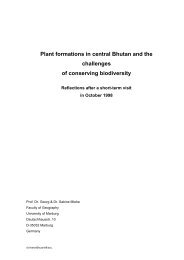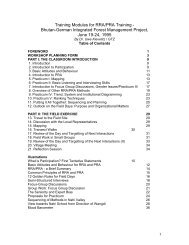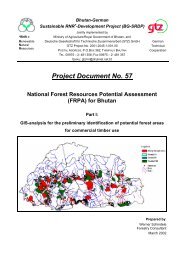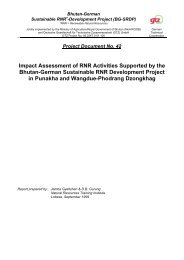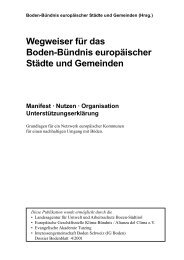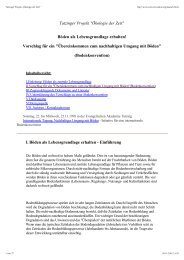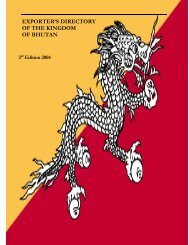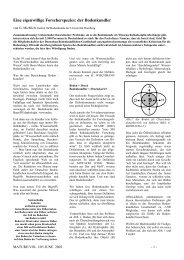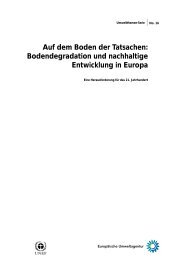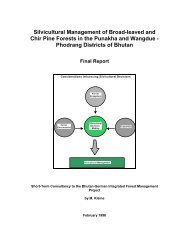GTZ Project Document No. 51 Report on Nahi Baseline Survey
GTZ Project Document No. 51 Report on Nahi Baseline Survey
GTZ Project Document No. 51 Report on Nahi Baseline Survey
You also want an ePaper? Increase the reach of your titles
YUMPU automatically turns print PDFs into web optimized ePapers that Google loves.
<strong>Nahi</strong> <strong>Baseline</strong> <strong>Survey</strong> April- May 2001Other categories of expenses <strong>on</strong> the farm include the annual taxes for land, livestock,house and other assets, c<strong>on</strong>tributi<strong>on</strong>s and d<strong>on</strong>ati<strong>on</strong>s for communal activities andcerem<strong>on</strong>ies.2.2.5 Household c<strong>on</strong>sumpti<strong>on</strong> patternBasically whatever is produced <strong>on</strong> the farm is practically c<strong>on</strong>sumed or retained <strong>on</strong> thefarm itself. Through out the valley rice provides the mainstay of the diet. As the mainstaple food crop, rice not <strong>on</strong>ly remains as the single most important and preferred foodcrop, but also socially occupies an important place am<strong>on</strong>g the family’s dietary system.Therefore, for major part of the year, most households in the valley c<strong>on</strong>sume riceespecially during autumn, winter and early part of the spring seas<strong>on</strong>. However, sincepaddy is not sufficient for most households, the c<strong>on</strong>sumpti<strong>on</strong> of rice throughout the yearis not possible for majority of the households.Only 65% of the total farm households have sufficient supply of rice from their farm.About 22% of the total households meet their rice deficiency by purchasing from marketand 13% from neighbours and village lenders. Most households therefore, makenecessary arrangement by other available food crops grown in the area so as to meet theoverall food requirement of the family. The other food crops that form the part of thehouseholds’ dietary system include maize, wheat and barley, which are usually c<strong>on</strong>sumedin seas<strong>on</strong>s when households run out of rice stock or at different intervals to prol<strong>on</strong>g thec<strong>on</strong>sumpti<strong>on</strong> of the available rice stock.The seas<strong>on</strong>al c<strong>on</strong>sumpti<strong>on</strong> pattern of food items (Table 2.5) in the valley reflects rice asthe most preferred crop and it is c<strong>on</strong>sumed throughout out the year by all the households(100%) with some wheat, barley and maize at different intervals or seas<strong>on</strong>s. For example,more wheat and barley are c<strong>on</strong>sumed in summer by a larger number of farmers, moreimported butter in winter and cooking oil in winter and autumn by some households.Table 2-5 Seas<strong>on</strong>al c<strong>on</strong>sumpti<strong>on</strong> patterns of food items by the householdsLocal Local Cooking ImportedRice Wheat Barley Maize butter Cheese oil<str<strong>on</strong>g>No</str<strong>on</strong>g> of farmers 95 64 33 46 69 66 76(100%) (67.2%) (34.7%) (48.3%) (72.5%) (69.3%) (79.8%)Seas<strong>on</strong> 0Whole year 95 11 7 6 41 34 33 13Winter 6 4 9 5 8 12 3Autumn 4 9 6 6 12 3Spring 5 3 4 6 6 5 6Summer 34 17 9 8 6 5 7Sometimes 3 2 9 3 6 9 22Source: RRA <strong>Survey</strong> May 2001butter54(56.7%)Since whatever produced <strong>on</strong> the farm is not sufficient, some seas<strong>on</strong>al arrangements arenecessary for most of the households to ensure food supply for the farm family. Besidesfood needs, households also requires inputs like seeds, tools, equipment and others forcarrying out farm activities <strong>on</strong> time. These are arranged from different sources notably12



